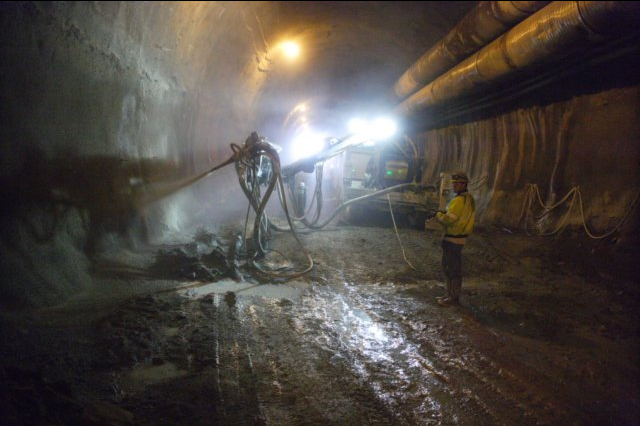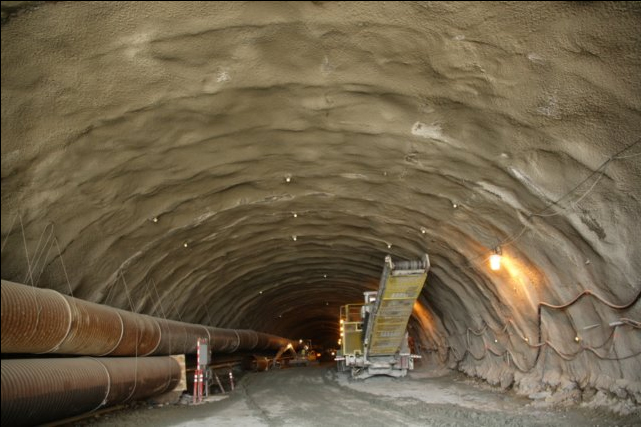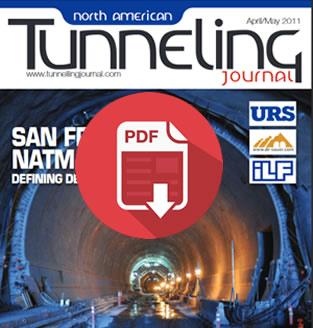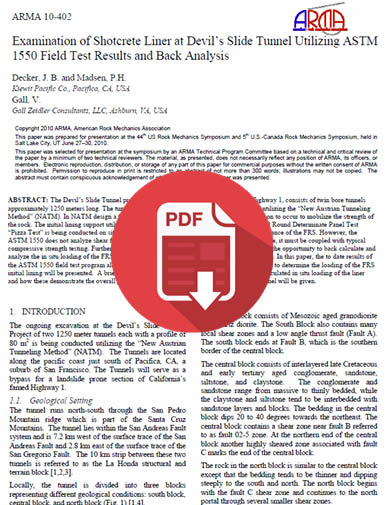Devil’s Slide Road Tunnel and Barchip Synthetic Fiber Shotcrete Reinforcement
Completed in 2012, The Devil’s Slide tunnel project is located on route 1 in San Metro Country and was the first tunnel built by CALTRANS in over 40 years. The project called for construction of two tunnels beneath San Pedro Mountain to remove the problem of regular road closures caused by landslide and rock falls.
The two tunnels are 1.26 km and 1.23 km long and pass under the mountain at depths up to 200 m. The single lane tunnels are 9 m wide x 6.8 m high with 5 m wide x 18 m long cross passages every 120 m. Each tunnel has a vertical clearance of 4.75 m and provides a single 3.6 m wide travelled way, two shoulder areas (2.4 m and 0.6 m wide), and two 1.2 m wide sidewalks, for a total width of 9.0 m.
The tunnels were excavated simultaneously from the northbound and southbound portals respectively. Construction was undertaken using the New Austrian Tunnelling Method (NATM) and excavation consisted of road header and drill and blast for harder rock conditions.
The project faced complex ground conditions with the drive passing through three distinct geological zones, separated by three inactive fault. Furthermore, the groundwater table lies above the tunnel increasing the risks from water ingress.
Depending on ground conditions along the alignment, the initial support system consists of BarChip synthetic fiber reinforced shotcrete, rock dowels, lattice girders, spiles, and grouted steel pipes in various combinations. The final lining is a cast-in-place reinforced concrete lining, with a waterproofing membrane and drainage system placed between the initial and final linings.
BarChip fiber reinforcement was chosen as the preferred reinforcement for the initial lining after an extensive on-site testing program of different fiber types with the ASTM C1550 RDP test (download the paper opposite for more details on this program). BarChip synthetic fiber met the project called for 320 Joules (RDP) toughness at 40 mm deflection at 7 days.
BarChip synthetic proved the highest performing fiber and delivered the required ductility in the complicated ground conditions. With the risk of water ingress, the long term durability of Barchip’s reinforcement was a key factor when compared against corrosive steel alternatives.
Quick Facts
- Twin tunnels approximately 1,250 m long
- Approximately 9.0 m wide, 4.75 m vertical clearance, with cross passages every 120 m
- Initial FRS lining called had a 7 day toughness specification of 320 Joules (RDP) at 40 mm deflection
- Reinforcement changed from BarChip Shogun to BarChip 54 as a result of superior performance from BarChip 54.
- Constructed with New Austrian Tunnelling Method (NATM)
- Excavation using road header and drill and blast
- Estimated cost of USD $ 180 to $ 200 million.
- Complicated geological conditions included 3 faults
- First tunnels built by Caltrans in 40 years
- Reinforced with BarChip structural synthetic fiber













